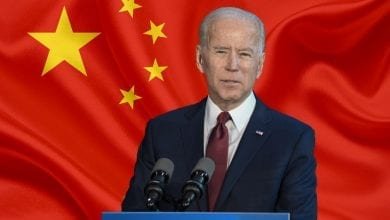Fed Action, Once Again, Way Too Little & Way Too Late
At its May 4 meeting, the Fed decided to raise the Federal Funds rate by half a percentage point, or 50 basis points (BPS). That’s the largest single rate hike in 22 years. This raises the fed funds rate to the 1% range. Considering inflation is running at an 8.5% annual rate and that we have been facing the inflation problem since March 2021, the Fed action is way too little and way too late.
The inflation rate for the month of April will be reported at the end of next week. The CPI, or Consumer Price Index, is expected to be less than the 1.2% monthly rate recorded in March, but the number will be high enough to raise the annual inflation number close to 9%.
Brace for Inflation of 10%
Because producer prices have been rising at a more than a 10% rate for the last four months and because the world is about to experience a food shortage that will drive up food prices, the CPI released in June will be very high. That means the annual inflation rate could exceed 10% by summer. Clearly, that is unacceptable.
The Fed uses a different measure for inflation. It uses the Personal Consumption Expenditure (PCE), which is a measure of how consumers react to inflation rather than the actual inflation number. The PCE is now at 6.6%. The Fed target is 2%.
In addition, last November, the Fed finally started to reduce its $120 billion monthly bond-buying program. That program, started in March 2020, was similarly designed to keep interest rates low. The Fed realized that the federal government, in fiscal years 2020 and 2021 was spending about $240 billion more each month than it raised in tax revenue. Instead of having the public purchase that $240 billion monthly, the Fed simply printed $120 billion more money.
That increase in the money supply also helped to keep interest rates lower.
To recap, the bond-buying program finally ended in March of this year. Interest rates were raised by 25 basis points or 0.25% in March. That action was way too little to have any significant influence on inflation. As a result, yesterday’s 50 BPS increase was sorely needed this month. However, that, too, will only incrementally reduce inflation.
Enter the Hawks
That means the Fed will have to get more aggressive. It will likely raise interest rates by another 50 BPS in June and another 50 BPS in July. While that will help, it will simply not be nearly enough, meaning even high interest rates will be forthcoming.
In addition, the Fed has purchased a total of about $9 trillion in government bonds over time. The total public debt is now authorized to reach $31.5 trillion, of which $9 trillion is held by the Fed, and the remaining $22.5 trillion is held by the public, which includes bond purchases from investors in other countries. The Fed has begun to sell some of the $9 trillion in bonds to the public, which will reduce the money supply.
Had the Fed started to reduce its bond-buying program and raised interest rates gradually back in March 2021, inflation would be about half of what we are seeing today.
Raising interest rates will cause some homebuyers and car buyers to drop out of the market since they can’t afford the monthly payments at the higher interest rates. That is exactly what the Fed is trying to accomplish. Most of the inflation is caused by excess demand, so the higher rates will reduce demand and put downward pressure on prices.
Inflation Running Hot
Since the Fed waited too long and since the rate increases are not sufficient, inflation will continue to run at the 10% level. There are also some other negative implications of the Fed’s shockingly irresponsible monetary policy.
Its policy will result in more wage inflation. Already we see organized labor groups and unions saying that they want wage increases high enough to cover the inflation rate and give them a real wage increase. That means wages must rise by 11% or more. This could lead to a wage-price spiral, which would make inflation an even more difficult problem to solve.
The current inflation is due to 1.) policy-induced rising energy prices, 2.) wage inflation, 3.) excess government deficit spending, and 4.) the United States Federal Reserve Bank’s shockingly irresponsible monetary policy.
The Biden administration will not reverse its energy policy, which will only continue to keep energy prices high. Wage inflation will worsen as workers seek raises that exceed the inflation rate.
On top of this, the Biden administration continues to deficit spend, so this year’s deficit will be about $1.3 trillion. That leaves the entire inflation problem up to the Fed to fight. To do that, it must raise the fed funds rate between a minimum of 1.5% and 2%, or more, before the end of the year.
The danger with that is the interest rate increases could eventually reduce demand so much that a recession comes. Frankly, that is the most likely scenario at this point.
Agree/Disagree with the author(s)? Let them know in the comments below and be heard by 10’s of thousands of CDN readers each day!
Content created by Conservative Daily News and some content syndicated through CDN is available for re-publication without charge under the Creative Commons license. Visit our syndication page for details and requirements.




